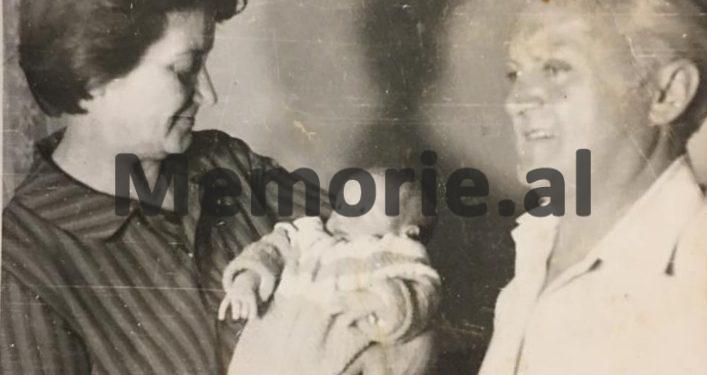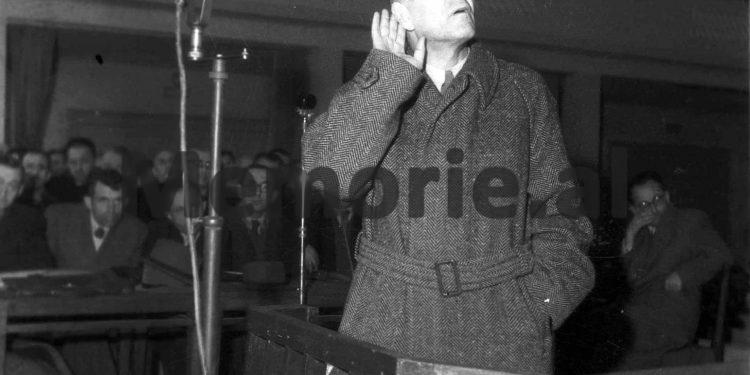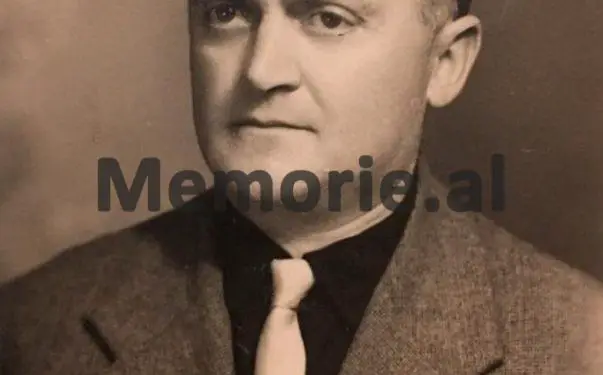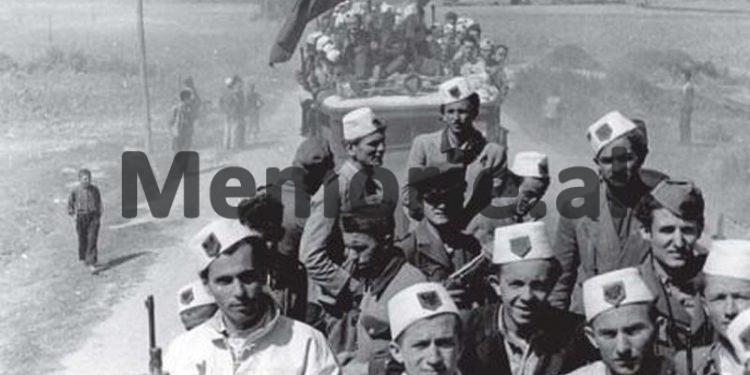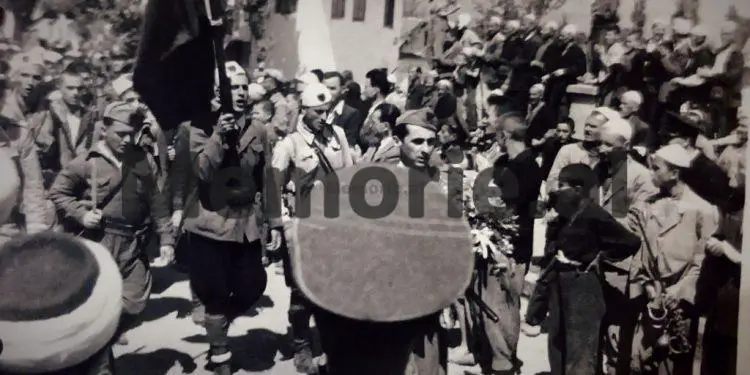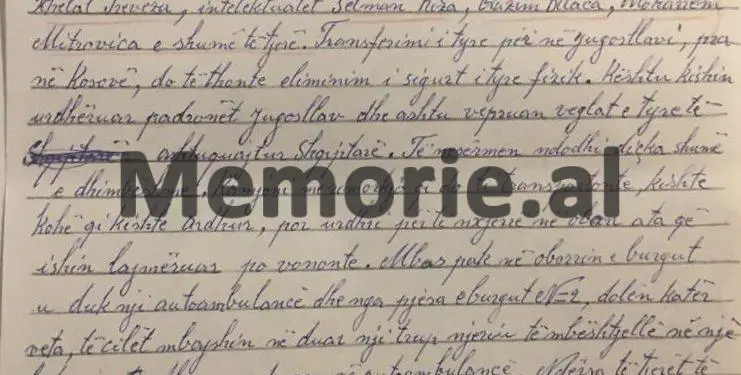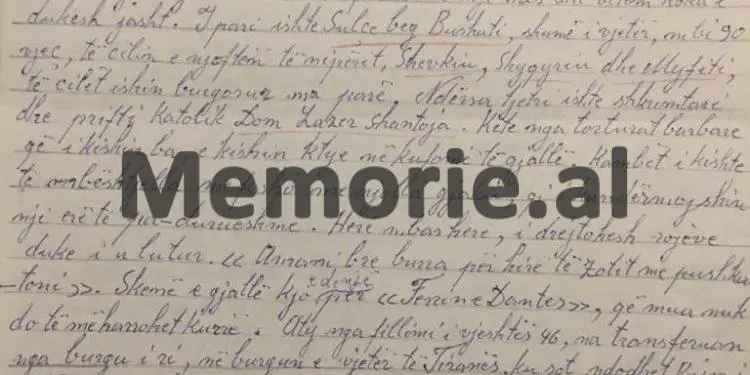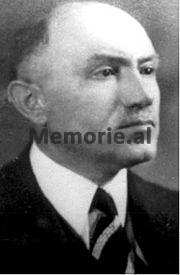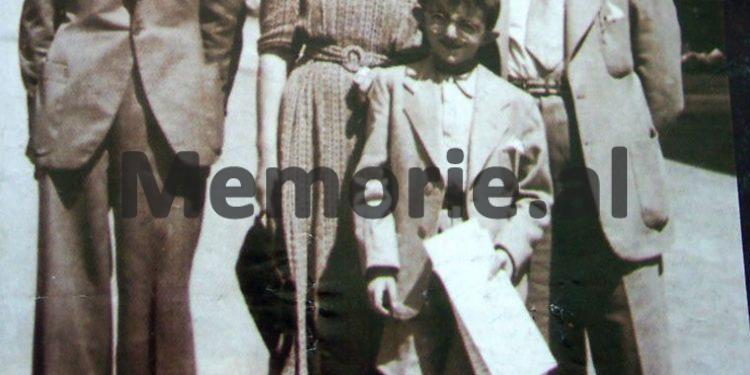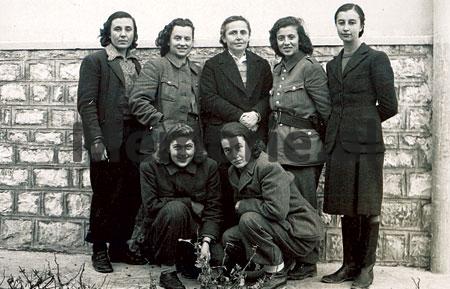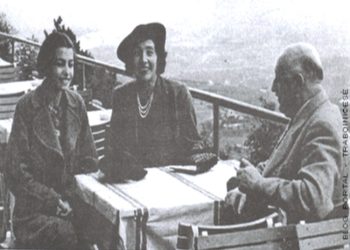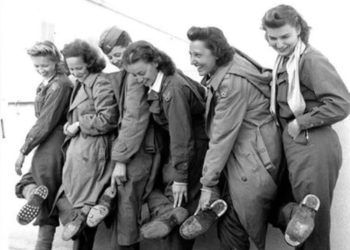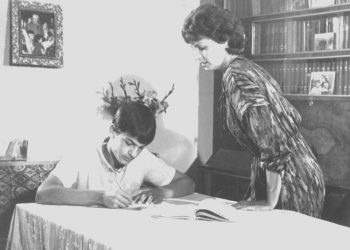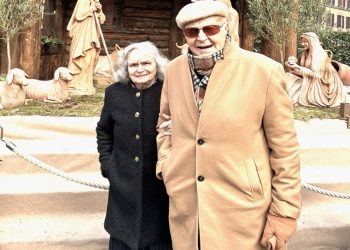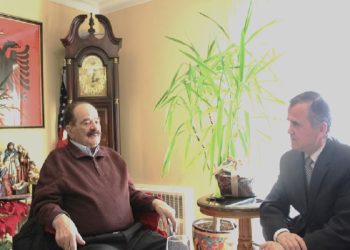Dashnor Kaloçi
Memorie.al publishes the unknown testimonies of Xhemal Alimehmeti, former senior exponent of the National Front during the War, who was arrested immediately in the first days of January ’45, and was sent to serve his sentence in the Old Prison of Tirana, “Mine Peza”, where at that time were arrested a large number of intellectuals, ministers, military, prominent politicians and senior officials of the Albanian government since the time of Ismail Qemali and after, as : Fejzi Alizoti, Terenc Toçi, Aqif Përmeti, Gustav Mirdash, Koço Kota, Hilmi Leka, Reshit Valteri, Javer Hurshiti, Dik Cami, Ismail Golemi, Zef Kadarja, Tahsim Bishqemi, Shyqëri Borshi, Daut Çarçani, Kole Tromara, Bah Vrioni, Mihal Sherko, Rrok Gera, Tefik Mborja, Sokrat Dodëbiba, Mihal Zallari, Ndoc Naraçi, etc., who ended up in the Special Court.
Alimehmet’s accounts of many of the foreign nationals held in solitary confinement in that prison, such as: Italians, Germans, white Russians, Hungarians, Poles, Greeks, Yugoslavs, etc., and the German military with the rank of colonel who often took him to the Ministry of Internal Affairs where he deposited…?! How Bedri Pejani, former chairman of the Second League of Prizren, Professor Selman Riza, Qazim Bllaca, Muharrem Mitrovica and senior military Qazim Komani, Fuat Dibra (Xhaferri), were extradited to Yugoslavia in 1945 from the old Tirana prison. Sitki Skopje, Xhelal Preveza, etc., and one night before they left, Riza Ferri, the son of the great patriot of Kosovo, Jakup Ferri, refused to return and after arguing with Major, Zija Kambon, said: “Why do not you kill us, but lead us to kill Tito”, he poisoned himself with a handful of drugs…
In the old prison of Tirana at “Mine Peza” street, I had the church and Bahri Omari and Kol Tromara, both personalities and people with great reputation in Albanian politics since the early 1920s. I remember that from February 1945, Bahri was met by his wife, who was Enver Hoxha’s sister, accompanied by Nexhmija, who had just married Enver. At the meeting room, the Shepherd’s wife introduced him to Nexhmija, telling him that she was Enver’s bride, and took out some small gifts from the bag she had with her, which the newlywed couple, according to Gjirokastra customs, had given to Bahri. Bahri did not want to take them, but his friend Kole Tromara (whom he respected immensely) insisted that he should not return them to you. This is how Xhemal Alimehmeti, the former main exhibitors of the Nationalist Youth of the National Front during the Anti-Fascist War, recalled that unusual event that took place in the old prison of Tirana 75 years ago (in the beginning of February 1945). who was one of the political prisoners arrested there. Alimehmeti, who was arrested when the communists came to power in December 1944 and served several years in Tirana prison cells, in the testimonies he gave us shortly before he passed away, told about Nexhmije’s visit. Hoxha in the Tirana prison where she had gone with Enver’s sister and at the same time Bahri Omar’s wife, who was arrested in that prison. Also, for this event, Mr. Alimehmeti also wrote in his memoirs (with his writing), which he gave us shortly before he passed away, where among many, many stories and events dating from 1939 onwards throughout the period of the War, he also wrote about the mysteries of that infamous prison, where the ruling communist regime eliminated many of its political opponents. Like: well-known intellectuals, ministers, deputies, politicians and senior military who had served in various governments of the Albanian state from the time of Ismail Qemali to that of Colonel Fiqëri Dines under German occupation, as well as many German foreign nationals., Italian, Hungarian, Polish, white Russian etc. But in this article, we will focus only on the interview we had with Mr. Alimehmeti, for the period when he was in the Old Prison of Tirana (“Mine Peza”) as well as some other events that took place in the last days of the War.
Continued from the previous issue
Mr. Alimehmeti, it is said that there were some Kosovars in the Tirana prison at that time who were later extradited to Yugoslavia. What is the truth about this?
Yes, this is more than true. I remember that at that time in the Tirana prison were arrested some people who during the occupation had served in high positions in the local administration of Kosovo. One evening, the director of the prison came and read aloud a list of names which he instructed to be prepared, as they would be traveling to Yugoslavia the next day.
Do you remember any of the names that were read by the prison director?
As far as I remember in that list of names I remember that they were: Bedri Pejani, former chairman of the Second League of Prizren, Professor Selman Riza, Qazim Bllaca, Muharrem Mitrovica and senior military Qazim Komani, Fuat Dibra (Xhaferri), Sitki Skopje, Xhelal Preveza, and some others I do not remember. The next night a very painful event happened.
What happened…?!
As the truck with the trailer to transport them to Yugoslavia arrived, the order to take them to the yard was delayed. After a while, an ambulance appeared in the prison yard and from the part of the prison no. 2, four people came out who were carrying a human body wrapped in a blanket and loaded it into the ambulance. While the others were handcuffed, two by two they were put in the truck with a trailer and sent to Yugoslavia, from where, as I later learned, many of them did not return alive.
Did you find out who the man who was wrapped in the blanket was?
We learned it the day after our airing, so we learned everything about what had happened in prison. One of those appointed to go to Yugoslavia was named Riza Ferri and was the grandson of the great Kosovar patriot Jakup Ferri. Rizai had poisoned himself and was the one who was pulled out with a blanket to the ambulance.
What had happened to him, was it learned why he had done that action exactly the night before they were to be extradited to Yugoslavia?!
I wanted to tell you this, Riza’s dialogue in the last moments of his life, with the Commander of the People’s Defense Brigade, Major Zija Kambo. When they called Major Kambon on the phone, he came and found Riza still alive. Rizai, who had been poisoned by drinking a large handful of medicine, addressed him, saying: Do you’s dirty, why don’t you kill us, but send us to kill Tito “?!
Of the prisoners who were foreign nationals, who did you get to know?
As I said above, there were many foreign nationals in that prison and with some of them we were often seen because then the inner doors of the prison were not closed and we communicated with them every time. Of these I remember the three German girls who were brought to prison at the end of December 1944. They were named Elsa, Amri and Erna and were captured by partisans while traveling in a German convoy on the Kukës-Prizren road. One of them was the secretary of General Fizztung, the commander-in-chief of the German forces in Albania. While the other two had worked, it seems to me in the German company for the extraction of oil in Kuçova.
Were you able to communicate with them?
We were in daily contact with them because the women’s room was next to our room. All the prisoners learned their story because it was related to the massacre of 104 Albanians who were interned in the Prishtina camp. After they were taken prisoner, the German headquarters, through their translator, Captain Petraq Pekmezi, intervened near the partisan headquarters that was then located in the village of Priska in Tirana, to release them by exchanging them with some prisoners who were in the Prishtina camp. The agreement was made and the Germans, at the request of Enver Hoxha’s headquarters, released ten internees who were Yugoslav communists, but Enver demanded the release of all Albanians who were there. After that, the Germans, indignant at the breach of the agreement, shot 104 Albanians in the Pristina camp.
How does the fate of those three cemeteries continue after the breach of the agreement?
Three girls remained in prisons and internment camps in Albania until 1956 when their repatriation became possible after the Khrushchev-Adenhauer agreement. This event was told to me in detail by my music professor, Luigj Filaj, who had worked as a translator for the Germans together with Captain Petraq Pekmezi.
Who else did you know there in prison from the main exponents of Albanian politics of Zog’s time or of the period of occupation of the country?
There in prison as I said and above were a large number of them. I want to remember Ibrahim Bicaku, the son of the great patriot Aqif Pasha of Elbasan, who had chaired the Lushnja Congress, who had been prime minister at the time of the German occupation. Ibrahim was the only so-called quisling prime minister in all of Eastern Europe not to be shot.
But why did this happen?
This came after Myslym Peza, who at that time was the Deputy Prime Minister and the main figure behind Enver Hoxha, appeared as a witness in his trial. Myslymi stated in court that during the war, when Ibrahim Bicaku was prime minister, he had sent him to Peza two trucks with weapons, food and clothing, for the partisans of Peza.
What about the exponents of the National Front where you had joined and who were you in prison?
In prison I had the opportunity to get to know Bahri Omar, Enver Hoxha’s brother-in-law and his close friend, Kol Tromara, who, since 1920, had become known as personalities and people with a great reputation in Albanian political life… I remember that in February 1945, Bahri was visited by his wife, who was Enver Hoxha’s sister, together with Nexhmija, who had just married Enver. In the meeting room, the Shepherd’s wife introduced her husband to Nexhmija, telling her that she was Enver’s bride and from the bags she had with her, she took out some small fishes which the newlyweds had made furs according to Gjirokastra customs… Bahri did not want to take them at all, but his friend Kole Tromara begged him, telling him that it was not good for him to return them to you and he accepted them face to face.
Who of the Zogists did you know there in prison?
I also met Osman Gazepi, a senior career officer who had long served as King Zog’s adjutant with the rank of Colonel. I remember back in August 1945, when a commemorative article was being read on the radio on the second anniversary of the Barmash War against German forces, Osmani begged me to read the article because he could not read it himself. After I finished the article, he said to me: “How many lies”?! He then explained to me that in the Barmash War, in the first week of August 1943, not only the partisans who had left the front had fought, but the forces of the National Front had fought a great battle there. This happened after a meeting in Vithkuq of Korça, which was attended by the exponents of Balli Kombëtar, Kole Tromara, lawyer Xhevdet Kapshtica and Faslli Frashëri. The head of the English mission, Major Maklin, was also aware of this, who had closely followed the fighting of the National Front forces commanded by Maliq Dushari, Safet Butka, Qemal Burimi and the commander of the operation, the academy captain, Jani Dilo, son of the patriot, Ilia Dilo Sheperi.
What about the clergy you had in that prison?
Of the clergy at that time there were many in that prison, but I will recall some of them. The first cleric to clash in the Tirana political prison was Hafiz Sherif Lëngu, who had been the Chairman of the Muslim Community in Albania, a position he had held during the occupation. He came from a respected family from Dibra and had been for a long time the Mufti in Skopje, where he had participated in many Albanian assemblies, known as anti-Slavic, which had led to his arrest.
How long did they keep him in jail?
After serving five years in prison, he was released shortly before his death. I will never forget a cold winter night when the opening of the main door of the prison was heard. After a while we saw that two live dogs had been thrown into the corridor, covered with a blanket. One of them was dressed in a national costume and wore a toned party on his head, while the other had been put in a bag and only his head was out.
Who were they?
The first was Sulçe beg Bushati, an old man close to the 90s, known to his grandchildren who were imprisoned there, Shefkiu, Shyqëriu and Myfiti, while the other was the Catholic writer and priest, Dom Lazër Shantoja.
What had happened to them, why were they in that condition?
From the barbaric tortures they had inflicted on them, they had turned them into living corpses. From time to time, Dom Lazër Shantoja, in a voice that aroused pity, prayed to the prison guards, saying: “Are you obsessed, men, for God’s sake shoot me.”
What other clerics did you have there?
From other clerics I also knew Padër Mëshkala. I remember one day he was walking in the air with two young boys. From the second-floor window, they saw Captain Muço, an officer in the Ministry of Internal Affairs who also served as a prison investigator. After the airing was over, Captain Muço, along with two other police officers holding a cart in his hand, came inside the cell of the two young men who had been accompanied by Padre Mëshkala. He asked them what the priest had told them and ordered them to be beaten with a cart. After a while, he called Padër Mëshkalën and asked him what he was saying to the young people in the yard. After his response, Captain Muçua ordered the two policemen to beat him and the desolate Padre. As they struck him, Mëshkalla said to Captain Muço: “How will you understand me, sir, that you have been torturing me for 13 months, I would die happy like Jesus Christ, if you crucified me like him”.
Were there other cases of torture against the clergy?
In that prison, the clergy were not only tortured and killed physically, but they were also humiliated morally. I remember that around 1947, two well-known clerics who served in Tirana, Archbishop Irene Banushi and the patriot and poet Ibrahim Hafiz Dalliu, were also arrested. Captain Muçua, as I said above, wanted to have fun with them and put Hafiz Dalliu’s turban on Archbishop Banushi’s head and then gathered the prisoners and asked him if she was okay. I do not forget the answer of Banushi who said: “I do not know, Mr. Captain, do I deserve to put the turban of this great patriot on my head. After that, the captain’s rage was great and suffice it to say that Hafiz broke all his teeth.
During that period that you were in that prison, was any prisoner shot?
I am telling you that during 1945 alone, it was impossible not to shoot five or six men a day, and often even women. Thus, in June of that year, 13 people were shot in one day.
Who were they and how do you remember the event of their shooting?
I remember them very well. Initially they tied them two by two in the hallway and the thirteenth of them was a young boy who had not yet turned 20, whose name was Mustafa Vrapi. It turned out that Mustafa’s mother had come that day and was waiting for him at the outer gate. She saw her only son as the firing squad was taking him to the River Bank to execute him. She got behind the car and cried and shouted, but the prison guards pushed her back hard. All these scenes, we other prisoners watched from the prison turrets. In the group that was taking them to be shot, were: Major Murat Basha, Sure Ajazi, Hajredin Zogolli, Osman Taraku, Mersin Hasa, Xhelal Peza, Besim Pazari, Ibrahim Bodinaku, Avdulla Kusi, etc. When they had lined them up two by two as if they were soldiers, they sent them out to be shot at the River Bank. That moment happened what I will never forget…
Specifically, what happened?
The thirteen gathered head to head and began to sing in the choir the Flag Hymn and their voices were heard until they disappeared from our sight, in the direction of the place of execution, which was not more than 20 minutes from there and the shots of weapons were clearly heard by us in prison./Memorie.al




